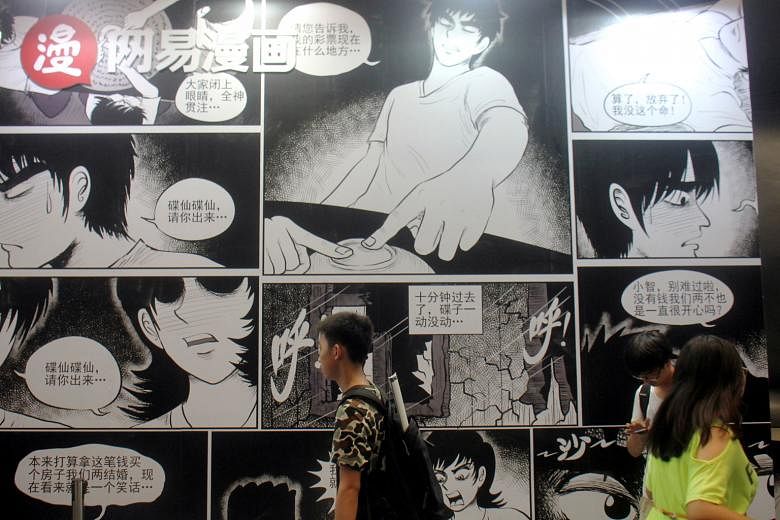HANGZHOU • Growing up in the Chinese port city of Dalian in the 1990s, Mr Zhang Hongchang spent hours immersed in Japanese cartoons like Dragon Ball and Naruto.
China's home-grown cartoons paled in comparison to the Japanese anime series on television and in comic books that captured the imaginations of Mr Zhang and his generation.
Today, Mr Zhang is one of China's hottest cartoonists and at the forefront of a new wave of Chinese animation that is being driven by the country's technology and Internet giants. His latest hit comic - which stars a high school student who is also a Taoist priest with secret super powers - has been viewed 160 million times online.
China's tech firms are engaged in a cartoon arms race to develop or buy Chinese characters in an animation market expected to hit 216 billion yuan (S$45 billion) by 2020, according to the EntGroup consultancy, trying to emulate the success of Walt Disney's ensemble, which ranges from Mickey Mouse to Iron Man.
Part of the winning formula has been the use of traditional Chinese religious and cultural themes, and characters. That, and improved quality in terms of art and storytelling, helped China's comic and animation market reach 150 billion yuan last year, according to Ent- Group's estimates.
China still lags behind the Japanese and American markets, but is catching up. Japan is the top producer of animation, while the United States dominates in terms of sales, taking a nearly 40 per cent share of the global industry, estimated at US$220 billion (S$299 billion) in 2016, according to a report from Research & Markets. China had around 8 per cent that year.
For Chinese companies, the development of compelling series and characters could also open up new business opportunities that companies like Disney have exploited, such as branded theme parks, games, movies, TV shows, lunch boxes and clothes.
China's technology giants play an outsized role in Chinese entertainment. Tencent, search company Baidu and e-commerce giant Alibaba control most of the top online platforms from movies to sport, and are dominant in social media and online gaming.
These firms are looking to latch on to a surging sub-culture being driven by a young generation with a taste for animation, called "dongman" in Chinese. This group is keen for more local-style heroes, according to industry executives. They are also wealthier than their parents were, and have money to spend.
The firms are starting to spend, though not yet at the level of Disney, which bought Pixar Animation Studios for US$7.6 billion, as well as Marvel Entertainment and Star Wars producer Lucasfilm for around US$4 billion each.
Tencent has invested in more than a dozen comic and animation companies since last year, according to public records, while its film arm launched a "100 animations" project to support domestic productions.
Baidu's iQiyi, is also splashing out on domestic comics, planning to spend 200 million yuan to sign Chinese artists and develop local characters, in addition to an earlier investment in 10 animation projects, the company said last month.
Alibaba and news aggregator Toutiao have snapped up production companies and launched animation platforms on their own sites. NetEase signed a deal last year with Disney to create Marvelstyle superheroes, but with Chinese characteristics.
Ms Luo Qiandan, marketing director of NetEase Comics, said the firm was using big data from its platform to analyse what comic consumers wanted and would feed this back to artists. It was also adopting elements like Chinese brush painting techniques and religious themes.
"Everybody is trying to use Chinese elements and Chinese style," she said.
REUTERS

